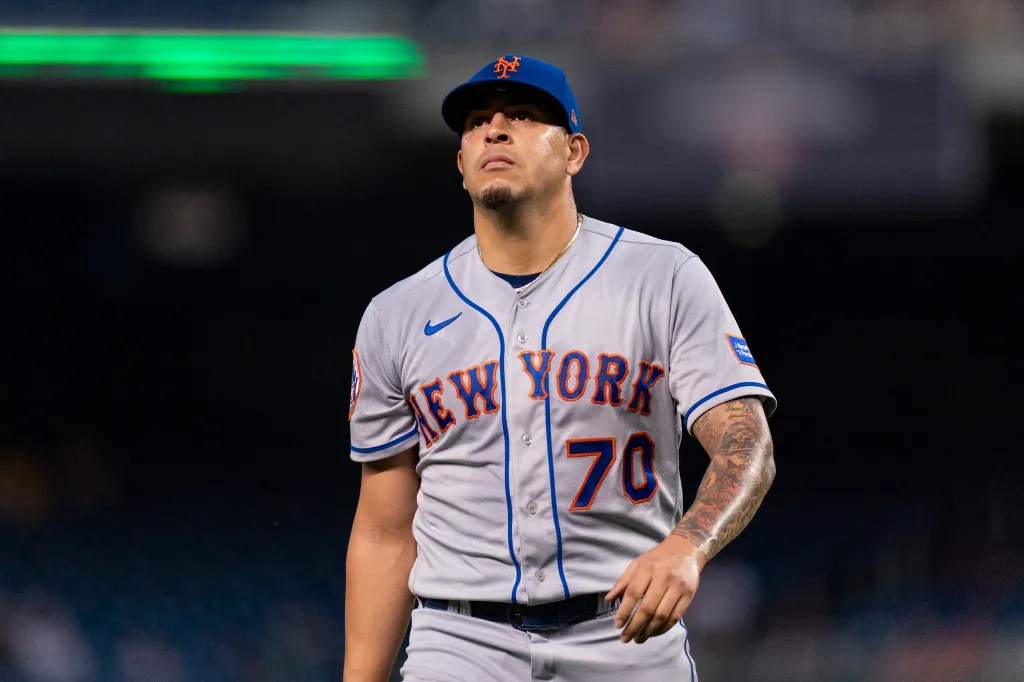Which pitchers from Syracuse will be traveling back and forth in the “taxi-squad”?
Since the end of September, the New York Mets have improved the depth of their 40-man roster. Some of these additions, like Harrison Bader and Joey Wendle, have guaranteed contracts because the player is anticipated to contribute on opening day. Some, like Cooper Hummel and Tyler Heineman, have been claimed off waivers simply to take a chance. Others, like Kyle Crick or Jose Iglesias, have only been signed to minor league contracts in order to add more depth.
In terms of who he kept on the 40-man roster and who he non-tendered or released from contract, David Stearns has shown strategic judgment. This would include players like Jeff Brigham who did not receive a pay increase or players like Luis Guillorme who are out of options. The younger players from 2023 who are further down the 40-man depth chart will still be needed to contribute by the 2024 Mets, though. Relief pitchers in particular should spend the most time on this “taxi squad” traveling back and forth from Syracuse. In light of this, which players did Stearns select for this short list so they could benefit from their prior season’s experience?
1. Grant Hartwig
Undrafted free agents have a proven track record of developing into important members of the Mets team. The most noteworthy was T.J. Rivera’s prolific run from 2016 to 2017. In 2024, Grant Hartwig will have a chance to contribute to the bullpen stability of the Mets. The native of Detroit, Michigan, was signed by Zack Scott for a meager $20,000 after going undrafted in 2021.
In June of the previous season, Hartwig made his Mets debut. He pitched admirably through the all-star break, giving up just one run in 11.1 innings. After David Robertson was traded, Buck Showalter was sufficiently impressed with his performance to utilize him in higher-leverage situations. Hartwig, however, had trouble in this capacity; in 24 innings pitched between August and September, he had a 7.03 ERA. His home and road splits, with an 8.66 ERA at Citi Field and a 1.50 ERA elsewhere, are his most startling numbers.
With so many uncertainties surrounding the bullpen, Hartwig will be counted on for more innings this season. During his call-up the previous season, he pitched well, demonstrating that his fastball and slider combination could hold its own against major league talent. Showalter attributed Hartwig’s late-game struggles to arm fatigue because of his usage when Robertson or Edwin Diaz weren’t in the bullpen. One could argue that, with the right use of Carlos Mendoza, he has the potential to emerge as this year’s Robert Gsellman because he appeared to pitch better in multi-inning roles.
2. Josh Walker
Prior to spring training, the Mets’ greatest need is a left-handed pitcher to complement Brooks Raley. Josh Walker is the only other option on the 40-man roster, so he should get a chance in spring training. Walker, who was selected in the 37th round of the 2017 draft out of Upstate New York, shocked everyone by making his major league debut in May of 2023. He had played five seasons in the minor league ranks of the Mets prior to his promotion.
During his three separate stints with the big-league club last season, Walker was extremely erratic. In ten innings of work, he struck out twelve batters while giving up nine earned runs and six walks. Walker did display some brilliance, despite the unappealing numbers, with a fastball that clocked in at 94.6 mph and a slider with a good spin rate. Walker has remained on the 40-man roster because Stearns projects both of these pitchers to be above average for left-handers.
Walker will most likely be added to the opening-day roster because the Mets are thin on left-handed relief pitchers. Previous teams, most notably in 2018 with Jerry Blevins and in 2022 with Joely Rodriguez, have begun the season with just one left-hander. In hindsight, the front office made a mistake by doing this, as it gave the manager fewer options for substitutions in the latter stages of games. Walker’s value as a reliever will be taken into account, and Jeremy Hefner will be assigned the task of acclimating the 29-year-old to facing big league talent.
3. Jose Butto
Come opening day, the Mets will need to decide how to set up their rotation. In 2023, Kodai Senga will primarily pitch with six days rest, so as the season goes on, a spot starter will be required. Jose Butto, who pitched as a starter and a long reliever in the previous season, is expected to be a part of this depth. Between 2022 and 2023, Butto made ten appearances in major league games, starting eight of them.
Expectations for the 25-year-old right-hander from Venezuela were unclear to the Mets. Despite having strong minor league pitching, Butto struggled with control during his spot appearances, walking 11 batters in 12 innings in April and May. Butto, however, was given another chance to begin in September and performed better than anticipated. In 27.1 innings, he struck out 28 batters and gave up just nine walks, pitching to a 3.29 ERA.
Butto needs to demonstrate that his impressive 2023 finish was not an anomaly and that he overcome his first-half control problems. He may have struggled because, like many minor league pitchers, he was forced to adopt bad habits by the new ABS (automated ball-strike system). Severino and Adrian Houser are two of the starting pitchers the Mets have added depth to, but none of them has shown they can make all 30 starts. Taking into account Senga’s constraints as well, Butto should receive more opportunities in 2024.
